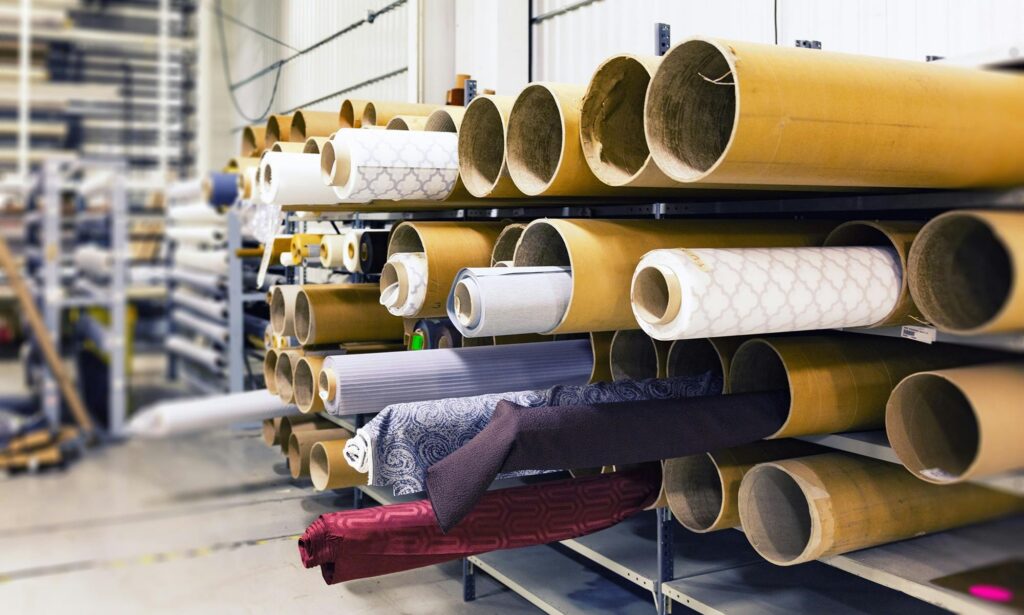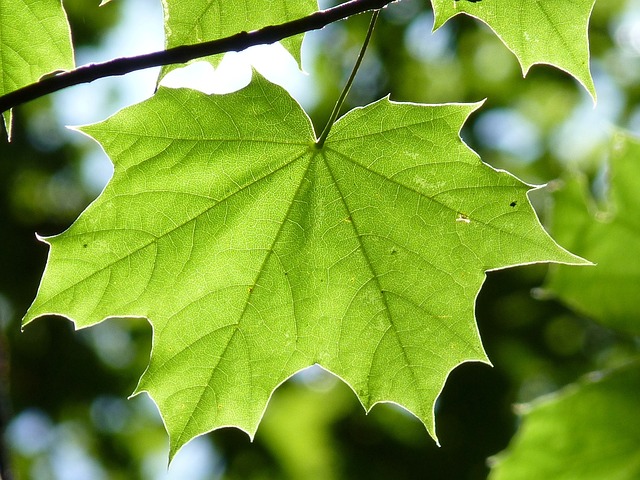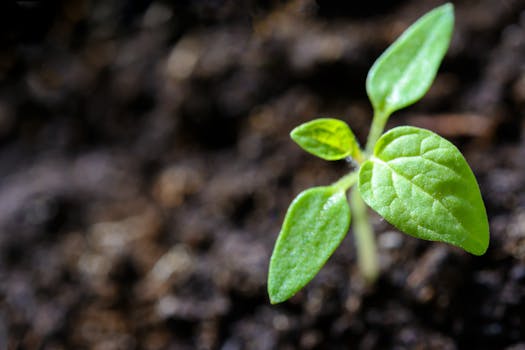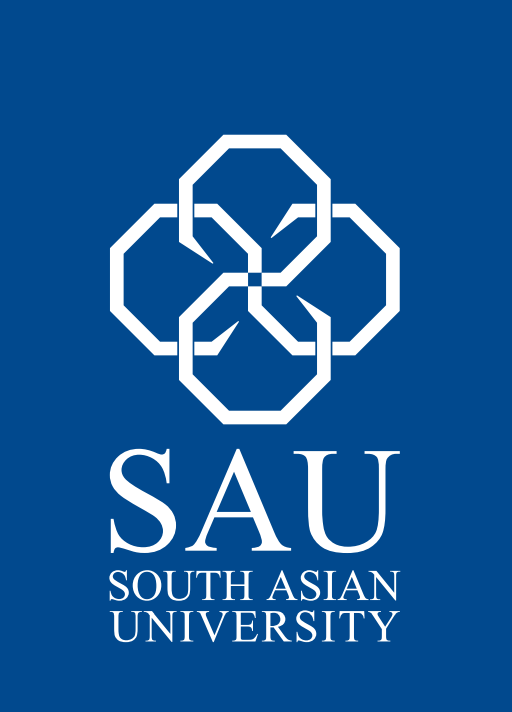By Mr. Pooran Chandra Pandey
Textiles industry through history: Prehistoric times to 19th century
In order to understand the complex issues of the textile sector especially with regard to sustainability right from production to manufacturing to processes to product life cycles to storage to transportation to waste-handling and subsequent pathway to transition of the sector to net zero status, it would be helpful to have a raft through its origin, growth, history and current state of affairs for a full view into sector’s geographical evolution through times and ecosystem approaches for context setting of the sector.
The history of the textile industry is old, layered, and consequential ranging from periods between prehistoric to 19th century and beyond. Middle Ages in particular remain a fascinating period. By early middle ages, certain Turkish tribes became proficient in production of a range of water intensive items such as towels, linen, rugs and carpets. Following Arab conquest of Sicily in 827 CE, exquisite fabrics were manufactured in Palermo’s palace workshops. And, it was around the period 1130; skilled weavers from Greece and Turkey had made their way to Palermo and began weaving magnificent silk interlaced with gold materials. Weavers later fled to Italy after the French conquest of Sicily in 1266, many settled in Lucca. The Florentines seized Lucca in 1315, transporting Sicilian weavers to Florence. A complex process ostensibly followed through using material, intricate processes and elements like water, among other based on earlier descriptions.
Later began influence of Germany and France in the sector. In 1480, France began producing woven silks. In 1520, Francis I imported Italian and Flemish weavers to Fontainebleau to produce tapestry. In 16th century, Flemish weavers were transported to France to work in factories established by Jean Gobelin. By the reign of Louis XIII (1610–43), French patterned fabrics had developed a distinct style focused on symmetrical decorative shapes that appeared lacelike. The Gobelin factory in Paris was later purchased by French government in 1662, under Louis XIV. Under Louis XVI (1774–93), French textiles advanced in style and technique with Classical elements interspersed with previous floral designs coming into being.
During 13th and 14th centuries, textiles in England were mostly made of linen and wool. Moreover, Flemish fullers (finishers) and dyers influenced the industry. In 1455, damask and flowered silks were being woven in London and Norwich, and in 1564, Queen Elizabeth I issued a license to Dutch and Flemish residents in Norwich for damask and flowered silk manufacture. Weavers who fled to England were recognized for their high-quality silk fabrics and their subtle use of intricate weaves and textures.
India was also advancing slowly establishing its modern textile industry since early nineteenth century, with establishment of the country’s first textile mill in Fort Gloster, near Calcutta, in 1818. The cotton textile industry, on the other hand, began in Bombay in the 1850s. A Parsi cotton merchant interested in domestic and international trade founded Bombay’s first cotton textile mill in 1854. In 1861, the first cotton mill in Ahmedabad, which later became a rival to Bombay, was set up.
The prehistoric weaving was thus advanced in both North and South America; both Peruvians and Mexicans had developed exquisite woven garments. Peruvian fabrics were similar to those of the ancient Egyptians. Inca cotton and wool garments were brightly coloured, with geometric and conventionalized human shapes as motifs. In 1638, English settlers founded a fabric factory in Massachusetts. By 1654, fulling mills had established themselves in Massachusetts, relieving the population of its need on England for fine linen and worsted.
Factory manufacturing of clothing (and shoes) on a wide scale did not begin until after the invention of the power-driven sewing machines. Nearly all clothing was local and hand-sewn before sewing machines, and tailors and seamstresses could manufacture unique articles of clothing for customers in most communities.
Around 1831, George Opdyke (later Mayor of New York) started making ready-made garments on a modest scale, which he stocked and marketed mostly through a store in New Orleans. Opdyke was one of the first merchants in United States while introducing the apparel business.
Over the course of the time, the majority of clothing from major companies is now produced in Asia, where labour costs are lower and more work is completed. China, India, Bangladesh, Vietnam, Indonesia, and Philippines are the countries that produce the majority of the clothing. Because most clothes are created by low-wage employees in these Asian countries, the cost of clothing is also lower. People frequently do not consider where their garments are created, opting instead to buy them because they meet their needs and lack understanding or experience in the field. People always look at the price when determining what to buy, and they may compare costs to see where they can save money.
The textile sector owes much to its evolution and development to the form and shape it is currently in to the industrial revolution. The development of the cloth and apparel was the foundation of textile industry, heralding an era of modern textile industry with which grew the concerns for the products, quality, price, material used, production processes, and considerations for sustainable practices that made the industry an intrinsic part of the local community, their livelihoods and materiality concerns that they came to understand about and slowly become the part of the solutions.
The textile industry and its historical evolution show that the sector is a global powerhouse serving as the driving force behind the fashion and apparel sector, simultaneously touching every aspect of our routine lives on a daily basis. However, its sheer magnitude, usage of resources across consumption and production processes and intricate supply chains make it one of the major contributors to the environmental concerns on a global scale.
Some of the pivotal issues surrounding the sector include the following and deserve much attention, going forward:
Production: It’s the culprit
Cotton Farming and Water Consumption
Cotton, the cornerstone of textile production, is cultivated extensively across the globe. Conventional cotton farming practices are heavily reliant on water-intensive irrigation systems. This can lead to the depletion of water resources, especially in regions grappling with water scarcity, which is the growing concern across the globe with some regions and nations in Asia, Africa particularly going dry and without much to hold on to. Thus, the textile industry’s dependence on water-intensive crops exacerbates the strain on already stressed water sources.
Chemical laced Pesticides and Fertilizers
Widespread use of chemical pesticides and synthetic fertilizers in cotton farming poses a significant environmental threat. These chemicals can seep deeper into the soil and find their way into water bodies, thereby harming ecosystems, aquatic life, and even human health. Over the longer period, such issues can have deeper and lingering impacts on overall human health and well-being.
Animal Agriculture for Wool and Leather
Animals, as sources of wool and leather, are vital components of the textile industry. However, their environmental challenges extend beyond the farm. Overgrazing, deforestation, and greenhouse gas emissions from animal agriculture have detrimental effects on the environment, deforestation and climate change.
Fibre to fibre manufacturing process: The manufacturing process that goes into making the textiles is often overlooked and underestimated, making the problem more accentuated with solutions not being aimed at in the process to a large extent. Such an approach has only been doing damage beyond the permissible limits of control. Issues of energy and water consumption, chemical dyes and finishing agents including labour conditions, human rights, lack of transparency, among others further aggravate the situation in the sector, warranting urgent actions and actions to put the sector at part with services sector, going forward.
Energy Consumption
The textile industry has dubious distinction for its massive energy consumption. A significant proportion of this energy is sourced from non-renewable fossil fuels. This high energy usage results in substantial greenhouse gas emissions, which further fuel the climate crisis, leading to collapse of local, national, and international climate commitments as agreed through Paris Climate Treaty, 2015 to keep 1.5 degrees C above the preindustrial levels.
Water Consumption
Dyeing and finishing processes, integral to textile manufacturing, consume vast quantities of water. Unfortunately, these processes are often conducted without adequate water management measures, and good practices, resulting in water pollution as chemicals, dyes, and other contaminants are released into water bodies, impacting human and aqua health in a variety of inter dependent manner.
Chemical Dyes and Finishing Agents
The use of synthetic dyes and a plethora of chemicals in textile processing further pose a significant threat to the environment. These chemicals can be released into the ecosystem, causing harm to aquatic life and posing health risks to workers and communities living in the vicinity of textile manufacturing facilities. Such issues in addition also pose challenges to policy makers in effective regulation and control of the hazardous agents that get released into the water bodies and local food value chains by way of water supplies that reach the households and gets either directly consumed or indirectly by way of washing cereals and vegetables finding its way into human bodies by way of consumption over time. It has also been evidenced that such direct and indirect consumption of water has upended the medical expenses of public exchequers across regions while making people and their health more prone and vulnerable.
Labour Conditions
The textile industry has also earned dubious reputation for unethical labour practices, which does not only have social implications but also environmental ones. Poor labour conditions often result in overconsumption of resources, as workers may be compelled to work long hours under inadequate conditions to meet unrealistic production targets, in violation of human rights principles and their adherence in the processes.
United Nations Global Compact Principles https://unglobalcompact.org/what-is-gc/mission/principles in this regard serve as guiding principles and have the force of transparency and moral authority at all levels while not being treaty provisions and mandatory. Businesses in the sector and industry as a whole may be exhorted upon to follow and report back both internally and publically on their improvements and achievements in line with ten UNGC principles both through available national mechanisms and also through Article 6 of the Paris Climate Treaty in the larger interest of building a positive people, profit and planet case for the industry.
Product life cycle:
The phenomena is attributable to over consumption human behavior, resulting in over consumption, over production and leading to shortened product life cycle, a prevalent scenario that may not be able to hold the sector in right measure and balance. All stakeholders and more so the shareholders would need to spare their constructive thoughts to put the necessary guard rails to secure the sector from a potential apocalypse.
Fast Fashion and overconsumption
The relentless churn of fashion trends drives consumers to purchase clothing at an unprecedented rate. This fast fashion phenomenon encourages overconsumption and results in overproduction of textiles. Consequently, the product life cycle is shortened, leading to an excess of discarded garments.
Microfiber pollution
Synthetic textiles, such as polyester, have the unfortunate characteristic of shedding microplastic fibers during washing. These tiny plastic fragments find their way into water systems, ultimately contaminating oceans and aquatic ecosystems.
Textile waste and land fills
The environmental consequences of textile waste are significant. A substantial portion of textiles ends up in landfills, where they decompose at an excruciatingly slow rate, releasing harmful gasses and chemicals into the environment, one of the contributors to CO2 emissions, a single most important cause and consequence to the climate change .
Transportation and Storage
Global supply chain
The textile industry’s globalized supply chain necessitates extensive transportation of raw materials, finished products, and components. This does not only increases the carbon footprint of the industry but also poses logistical challenges and costs.
Storage and warehousing
The storage and warehousing of textiles also have environmental implications. The need for vast warehouses and storage facilities can lead to changes in land use patterns and significant energy consumption, both of which have far-reaching consequences for the environment and climate change.
Waste handling
Sustainability is hard to achieve in the sector, given its intricate nature and resources used in the production and manufacturing of the final products. Recycling is stated to be done in the sector but it’s any ones guess for reasons of usage of diverse material and resources used in the production of the products, cost of technology and lessening of margins due to the cost implications acting as disincentive for a majority of companies and industries. In addition, recycling turns out to be wasteful exercise as it further pollutes when incinerators are used for recycling guzzling power and in turns creating more pollution and emissions. It’s a rather hard choice and is thus royally underdone or ignored all together by producers and manufacturers.
Textile recycling challenges
Recycling textiles is an intricate process due to the diversity of materials used in textile production. Often, only a fraction of textiles is successfully recycled, while the rest ends up as waste, exacerbating the industry’s waste problem.
Incineration and emissions
Incineration is a common disposal method for textiles. However, this practice releases pollutants into the atmosphere, contributing to air pollution and the greenhouse effect.
Wastewater from textile facilities
Textile manufacturing wastewater is laden with chemicals and dyes. Without proper treatment, it can contaminate water bodies, harming aquatic ecosystems and posing health risks to those dependent on these water sources.
Potential solutions
Sustainable Materials
The adoption of sustainable materials such as organic cotton, hemp, and other eco-friendly alternatives can significantly reduce the environmental impact of textile production.
Dyeing and Finishing Innovations
Innovations in dyeing and finishing processes, such as waterless dyeing technologies and the use of natural dyes, are becoming increasingly prevalent, reducing the industry’s reliance on harmful chemicals.
Circular Fashion
Promoting circular fashion, which encourages longer-lasting, high-quality garments and efficient recycling practices, can extend the life of textiles and reduce waste.
Regulation and Ethical Practices
Enforcing stricter regulations on the textile industry, including restrictions on harmful chemicals and unethical labor practices, can help mitigate many of the industry’s environmental and social issues.
Consumer Awareness
Educating consumers about the environmental impact of their fashion choices and the benefits of responsible consumption is paramount. Informed consumers can drive change by making more sustainable choices and demanding transparency from brands.
The environmental challenges facing the textile industry are multi-faceted and deeply ingrained in its production, manufacturing processes, product life cycles, transportation and storage, and waste handling.
Addressing these challenges necessitates a concerted effort from industry stakeholders, consumers, and regulatory bodies. By adopting sustainable practices, embracing innovative solutions, and promoting ethical production, the textile industry can weave a path towards a more eco-friendly, socially responsible, and sustainable future. Only through collective action can we begin to untangle the intricate web of environmental issues that currently plague the textile industry.
Sector’s transition to net zero status: What lies ahead?
Textiles are central to tackling the triple planetary crises of climate change, biodiversity loss, and pollution.
“Each year, the textile sector is estimated to be responsible for up to 8 per cent of the global greenhouse gas emissions because of the excessive consumption of natural resources and energy”, stated Veronika Hunt Šafránková, Head of the UN Environment Programme Brussels Office, while introducing on 16 May, 2024 the high-level event “Threads of Change: Systemic Transformation of the Textile Sector”, co-hosted in Brussels by UNEP and the Belgian Presidency of the Council of the European Union (EU).
“The sizeof 86 million Olympic swimming pools of water is used by the sector every year.”
The textile industry worldwide also generates 9 per cent of microplastic pollution flowing into the oceans, while exploiting its workers is also a global problem. In the quest for solutions, the high-level event was designed to provide a platform for discussion for all the stakeholders, from policymakers to industry and civil society.
“The world has become addicted to fast fashion“, said Inger Andersen, the UNEP Executive Director, in her opening statement. “The throw-away culture in wealthier countries doesn’t benefit anyone”.
Since 2020, UNEP has been working with the EU Commission to make the textile sector more sustainable and to promote circular business models. UNEP is also encouraging stronger policies in the EU to ensure the second-hand export market towards the Global South is under better regulation. UNEP has elaborated a global roadmap on the textile industry, working with 14 countries to implement it, with the EU’s support.
“European initiatives such as extended producer responsibility and regulations banning the destruction of unsold textiles represent important steps towards accountability and waste reduction”. More measures are still needed, as well as a “paradigm shift towards a circular and just textile economy. These measures are the significant starting point and may continually begin to contribute to the net zero pathway of the textile sector. However, it may not come all together across the board and would potentially need to adopt a unique yet differentiated approach in line with the Paris Climate Treaty provisions, 2015. Developed nations and OECD economies, given the state of their technology, innovation, legal means, finances, good practices, among others would need to take the lead in setting the agenda and support the overall transition of the sector to the net zero in a predetermined manner potentially in line with EU’s climate commitments of reach net zero status by 2050.
Such collaborative efforts may mean a combination of measures such as stringent laws, incentives, punitive measures, bilateral and multilateral understanding, and trade and commerce routes being activated and applied in the larger interest of tackling the triple whammy of climate change, biodiversity loss and pollution while protecting human lives, livelihoods and their well-being by repurposing the textile sector.





